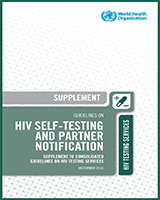27.1. Background
Adolescent girls and young women are especially vulnerable to HIV infection in high prevalence settings, underscoring the need to ensure the acceptability and accessibility of HIV testing and preventative services among this population. This study explores the values and preferences of adolescent girls and young women in Kenya for PrEP, HIV self-testing and partner notification.
27.2. Methods
This mixed methods study was conducted in five high HIV prevalence counties in Kenya (8.6%–27.1%): Homabay, Siaya, Kisumu, Mombasa and Nairobi. Females 18–24 years old were eligible for the study. Participants were recruited through national and county networks of PLHIV, youth groups, sex workers and PWID. Data was collected from structured questionnaires and focus group discussions (FGDs). FGDs were conducted in a mix of health facilities and community sites. Standard thematic analysis was applied to qualitative transcripts.
27.3. Results
489 adolescent girls and young women participated in structured questionnaires and 240 participated in 20 FGDs. Prior to the study, less than half of all participants had heard of PrEP, HIV self-testing or partner notification. However, respondents reported that all three approaches were acceptable for preventing HIV or learning your HIV status. 59% of respondents felt at risk for HIV. 89% had previously tested for HIV. 49% of 18–19 year-old participants and 29% of 20–24 year-olds did not know their partners’ HIV status. 11% of participants reported previously using PrEP.
Participants discussed possible adherence challenges for PrEP. It was also observed that many participants confused PrEP with PEP. Lack of confidentiality at health facilities was considered a barrier to accessing services. Participants felt HIV self-testing would provide much-needed privacy. However, some participants worried about forced testing, increased risk behaviors and the potential for oral HIV self-tests to revive misconceptions that HIV is spread through saliva. Partner notification was largely seen as beneficial for both partners to know their status and support each other to access treatment, but there were concerns it could influence household breakups.
27.4. Conclusions
Adolescent girls and young women in Kenya had overall positive perspectives on PrEP, HIV self-testing and partner notification. Supportive, confidential service delivery could improve uptake of HIV prevention approaches for this population.

